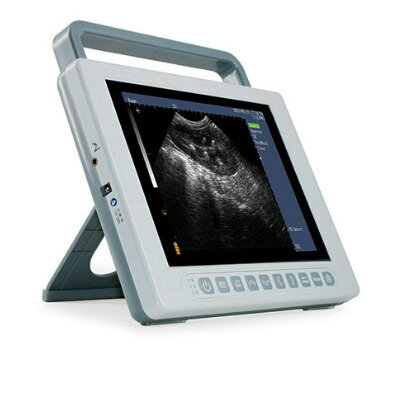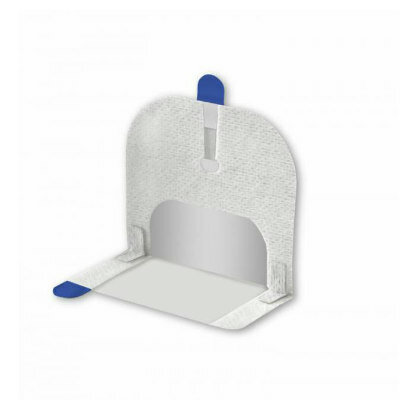Portable OCT Scanner Increases Access to Retinal Imaging
|
By MedImaging International staff writers Posted on 11 Jul 2019 |

Image: A portable OCT system costs less than one-tenth of commercial systems (Photo courtesy of Adam Wax/ Duke University).
A lightweight optical coherence tomography (OCT) scanner offers clinically accurate eye scans at a fraction of the cost.
Developed at Duke University (Durham NC, USA), the spectral-domain OCT system was designed using various cost-reduction techniques, including parts that cost less than a tenth of the retail price of commercial systems, and a housing made mostly from three dimensional (3D)-printed plastic sections. In addition, the spectrometer light path is designed to be circular, thus reducing expansions or contractions due to temperature changes, which occur symmetrically; as a result, the optical elements remain aligned. The device also uses a larger detector to make misalignments less likely.
The low-cost OCT system offers an axial resolution of 8.0 μm, a lateral resolution of 19.6 μm, and an imaging depth of 2.7 mm, for a total 6.6-mm field of view in the X and Y directions. In a proof of concept study, clinical imaging was performed on 120 eyes of 60 patients (60 eyes of normal volunteers and 60 eyes with retinal disease) using both the low-cost OCT and a Heidelberg Engineering Spectralis OCT system. Contrast-to-noise ratio (CNR) was measured from resulting images to determine system performance.
The results showed that the new OCT scanner produced images that were 95% as sharp as those taken by the Heidelberg Spectralis, with mean CNR value of low-cost OCT images only 5.6% lower than those of the Spectralis. The new OCT scanner also weighs 15 times less than the commercial system and is much smaller. The total fabrication costs were just USD 5,037, a tenth of the cost of the Spectralis. The results of the study were published on June 28, 2019, in Translational Vision Science & Technology.
“Right now OCT devices sit in their own room and require a PhD scientist to tweak them to get everything working just right. Ours can just sit on a shelf in the office and be taken down, used and put back without problems. We've scanned people in a Starbucks with it,” said senior author biomedical engineer Adam Wax, PhD. “With the growing number of cases of diabetic retinopathy in places like the United States, India and China, we hope we can save a lot of people's sight by drastically increasing access to this technology.”
OCT is the optical analogue of ultrasound; but because light is so much faster than sound, measuring time is more difficult. To time the light waves bouncing back from the tissue being scanned, OCT devices use a spectrometer to determine how much their phase has shifted compared to identical light waves that have traveled the same distance, but have not interacted with tissue. In use since the 1990s, OCT has become the standard of care for the diagnosis of retinal diseases, including macular degeneration, diabetic retinopathy and glaucoma.
Related Links:
Duke University
Developed at Duke University (Durham NC, USA), the spectral-domain OCT system was designed using various cost-reduction techniques, including parts that cost less than a tenth of the retail price of commercial systems, and a housing made mostly from three dimensional (3D)-printed plastic sections. In addition, the spectrometer light path is designed to be circular, thus reducing expansions or contractions due to temperature changes, which occur symmetrically; as a result, the optical elements remain aligned. The device also uses a larger detector to make misalignments less likely.
The low-cost OCT system offers an axial resolution of 8.0 μm, a lateral resolution of 19.6 μm, and an imaging depth of 2.7 mm, for a total 6.6-mm field of view in the X and Y directions. In a proof of concept study, clinical imaging was performed on 120 eyes of 60 patients (60 eyes of normal volunteers and 60 eyes with retinal disease) using both the low-cost OCT and a Heidelberg Engineering Spectralis OCT system. Contrast-to-noise ratio (CNR) was measured from resulting images to determine system performance.
The results showed that the new OCT scanner produced images that were 95% as sharp as those taken by the Heidelberg Spectralis, with mean CNR value of low-cost OCT images only 5.6% lower than those of the Spectralis. The new OCT scanner also weighs 15 times less than the commercial system and is much smaller. The total fabrication costs were just USD 5,037, a tenth of the cost of the Spectralis. The results of the study were published on June 28, 2019, in Translational Vision Science & Technology.
“Right now OCT devices sit in their own room and require a PhD scientist to tweak them to get everything working just right. Ours can just sit on a shelf in the office and be taken down, used and put back without problems. We've scanned people in a Starbucks with it,” said senior author biomedical engineer Adam Wax, PhD. “With the growing number of cases of diabetic retinopathy in places like the United States, India and China, we hope we can save a lot of people's sight by drastically increasing access to this technology.”
OCT is the optical analogue of ultrasound; but because light is so much faster than sound, measuring time is more difficult. To time the light waves bouncing back from the tissue being scanned, OCT devices use a spectrometer to determine how much their phase has shifted compared to identical light waves that have traveled the same distance, but have not interacted with tissue. In use since the 1990s, OCT has become the standard of care for the diagnosis of retinal diseases, including macular degeneration, diabetic retinopathy and glaucoma.
Related Links:
Duke University
Latest General/Advanced Imaging News
- New AI Method Captures Uncertainty in Medical Images
- CT Coronary Angiography Reduces Need for Invasive Tests to Diagnose Coronary Artery Disease
- Novel Blood Test Could Reduce Need for PET Imaging of Patients with Alzheimer’s
- CT-Based Deep Learning Algorithm Accurately Differentiates Benign From Malignant Vertebral Fractures
- Minimally Invasive Procedure Could Help Patients Avoid Thyroid Surgery
- Self-Driving Mobile C-Arm Reduces Imaging Time during Surgery
- AR Application Turns Medical Scans Into Holograms for Assistance in Surgical Planning
- Imaging Technology Provides Ground-Breaking New Approach for Diagnosing and Treating Bowel Cancer
- CT Coronary Calcium Scoring Predicts Heart Attacks and Strokes
- AI Model Detects 90% of Lymphatic Cancer Cases from PET and CT Images
- Breakthrough Technology Revolutionizes Breast Imaging
- State-Of-The-Art System Enhances Accuracy of Image-Guided Diagnostic and Interventional Procedures
- Catheter-Based Device with New Cardiovascular Imaging Approach Offers Unprecedented View of Dangerous Plaques
- AI Model Draws Maps to Accurately Identify Tumors and Diseases in Medical Images
- AI-Enabled CT System Provides More Accurate and Reliable Imaging Results
- Routine Chest CT Exams Can Identify Patients at Risk for Cardiovascular Disease
Channels
Radiography
view channel
Novel Breast Imaging System Proves As Effective As Mammography
Breast cancer remains the most frequently diagnosed cancer among women. It is projected that one in eight women will be diagnosed with breast cancer during her lifetime, and one in 42 women who turn 50... Read more
AI Assistance Improves Breast-Cancer Screening by Reducing False Positives
Radiologists typically detect one case of cancer for every 200 mammograms reviewed. However, these evaluations often result in false positives, leading to unnecessary patient recalls for additional testing,... Read moreMRI
view channel
PET/MRI Improves Diagnostic Accuracy for Prostate Cancer Patients
The Prostate Imaging Reporting and Data System (PI-RADS) is a five-point scale to assess potential prostate cancer in MR images. PI-RADS category 3 which offers an unclear suggestion of clinically significant... Read more
Next Generation MR-Guided Focused Ultrasound Ushers In Future of Incisionless Neurosurgery
Essential tremor, often called familial, idiopathic, or benign tremor, leads to uncontrollable shaking that significantly affects a person’s life. When traditional medications do not alleviate symptoms,... Read more
Two-Part MRI Scan Detects Prostate Cancer More Quickly without Compromising Diagnostic Quality
Prostate cancer ranks as the most prevalent cancer among men. Over the last decade, the introduction of MRI scans has significantly transformed the diagnosis process, marking the most substantial advancement... Read moreUltrasound
view channel
Deep Learning Advances Super-Resolution Ultrasound Imaging
Ultrasound localization microscopy (ULM) is an advanced imaging technique that offers high-resolution visualization of microvascular structures. It employs microbubbles, FDA-approved contrast agents, injected... Read more
Novel Ultrasound-Launched Targeted Nanoparticle Eliminates Biofilm and Bacterial Infection
Biofilms, formed by bacteria aggregating into dense communities for protection against harsh environmental conditions, are a significant contributor to various infectious diseases. Biofilms frequently... Read moreNuclear Medicine
view channel
New SPECT/CT Technique Could Change Imaging Practices and Increase Patient Access
The development of lead-212 (212Pb)-PSMA–based targeted alpha therapy (TAT) is garnering significant interest in treating patients with metastatic castration-resistant prostate cancer. The imaging of 212Pb,... Read moreNew Radiotheranostic System Detects and Treats Ovarian Cancer Noninvasively
Ovarian cancer is the most lethal gynecological cancer, with less than a 30% five-year survival rate for those diagnosed in late stages. Despite surgery and platinum-based chemotherapy being the standard... Read more
AI System Automatically and Reliably Detects Cardiac Amyloidosis Using Scintigraphy Imaging
Cardiac amyloidosis, a condition characterized by the buildup of abnormal protein deposits (amyloids) in the heart muscle, severely affects heart function and can lead to heart failure or death without... Read moreImaging IT
view channel
New Google Cloud Medical Imaging Suite Makes Imaging Healthcare Data More Accessible
Medical imaging is a critical tool used to diagnose patients, and there are billions of medical images scanned globally each year. Imaging data accounts for about 90% of all healthcare data1 and, until... Read more
Global AI in Medical Diagnostics Market to Be Driven by Demand for Image Recognition in Radiology
The global artificial intelligence (AI) in medical diagnostics market is expanding with early disease detection being one of its key applications and image recognition becoming a compelling consumer proposition... Read moreIndustry News
view channel
Bayer and Google Partner on New AI Product for Radiologists
Medical imaging data comprises around 90% of all healthcare data, and it is a highly complex and rich clinical data modality and serves as a vital tool for diagnosing patients. Each year, billions of medical... Read more




















